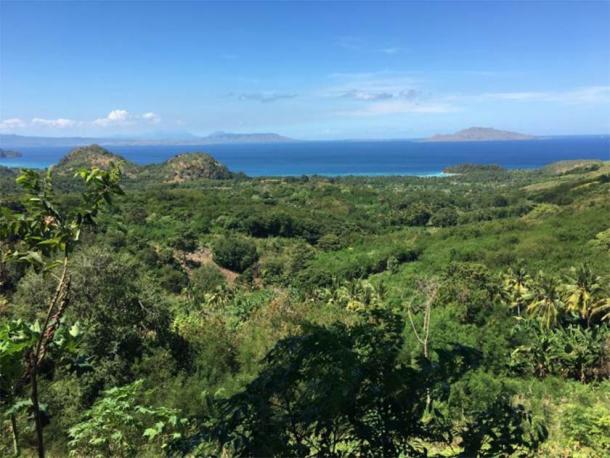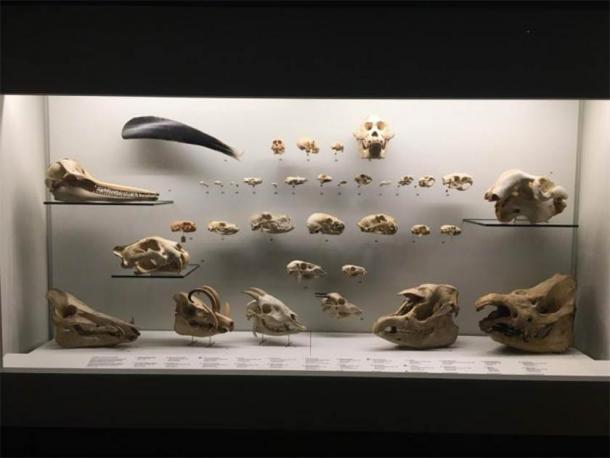The giant beasts and ancient megafauna that roamed Southeast Asia 100,000 years ago died because of climate change. A team of scientists from Griffith University in Brisbane, Australia, has published a new study in the journal Nature which claims that over 2.6 million years (the Pleistocene), Southeast Asia fluctuated from a wet tropical environment to rich grasslands, in which our ancient human ancestors roamed with megafauna. Their research concludes that climate change about 100,000 years ago caused a return to tropical conditions which killed off the early primates and megafauna.
What’s particularly disturbing in this new research is that the paper warns us that “the same could happen to modern large beasts as the world gets hotter.” If we don’t act now to cool the Earth down many of our furry, feathery and fluffy compadres will be gone, forever.

Modern-day southeast Asian rainforest. ( Julien Louys / Nature )
The Climate Switch That Wiped Out Millions of Giant Beasts
Studying the chemical structure of fossilized mammal teeth, and comparing these with over 250 new measurements of modern Southeast Asian mammals, the researchers looked at whether ancient animals ate more tropical grasses or leaves. This allowed for a clearer picture of environmental and changing climatic conditions at different periods of history.
It was determined that around a million years ago the rainforests that dominated the area from present-day Myanmar to Indonesia were affected by climate change . As the environment shifted from wet rainforests to grasslands, the area welcomed migrating grazing animals. However, climate change brought about a switch back to rainforest again, which only permitted the survival of smaller animals and Homo sapiens .
100,000 years ago the giant megafauna that fed along side Homo erectus in the grass rich climate in Southeast Asia consisted of stegodon, hyenas, water buffalo, Asian rhinos, oversized hyenas, tapirs, deer, goats, and, according to the Daily Mail , “elephants the size of double-decker buses.” There was also Gigantopithecus, representing the largest known primate that has ever lived, measuring ten feet tall (3.05 m) and weighing over half a ton (453 kg), which to many still walks in Asian forests in its more abominable modern guise: the Yeti.

Collection of mammal skulls of species endemic to southeast Asia. ( Julien Louys / Nature )
Nature Simply Swiped Them Aside
All of the species listed in the last paragraph were hunted by our early human ancestors, enabling them to develop new problem-solving skills and to thrive. However, besides us, all of these species were driven to extinction as a changing climate caused a loss of grassland. What this means in today’s terms, writes lead author professor Julien Louys, is that the large animals that we live with today “face being wiped out by global warming.” Dr. Louys lists “Gorillas, lions, tigers, rhinos” as being among the large terrestrial beasts that “will be lost forever” unless carbon emissions are drastically, and quickly, reduced.
It is now rainforest megafauna that are on the critically endangered list throughout Asia region as a direct result of the success of human mastery over wild animals in this part of the world. Speaking with the Daily Mail , Dr. Louys explains that rather than benefiting from the expansion of rainforests over the last few thousand years, Southeast Asian mammals are under unprecedented threat from the actions of humans , who are “taking over vast tracts of rainforest through urban expansion, deforestation and overhunting”. This “puts us at risk of losing some of the last megafauna still alive.”
All Out Jungle Warfare: Animal Traffickers V’s Nature
While the new paper makes for some pretty harrowing reading, it is but a reflection of the findings presented in a new 140 page report discussed on Mongabay in July this year. Discussing the horrific situation in the Brazilian Amazon with regards to illegal wildlife trafficking, the study reveals that “millions of birds, tropical fish, turtles, and mammals are being plucked from the wild and traded domestically or exported to the U.S., E.U., China, the Middle East and elsewhere.”
While a relative handful of the Brazilian animal traffickers are arrested, the organizers of this global criminal syndicate are seldom brought to justice. The report concludes that without urgent action, this trade not only harms wildlife, “but also decimates ecosystems and puts public health at risk.” The researchers point out that COVID-19 was most likely transmitted to humans from trafficked animals, and that without addressing the criminal gangs of the Brazilian Amazon wildlife trade, the next global pandemic might emerge not from Asian, but from Brazil.
Top image: Artist’s reconstruction of a savannah in Middle Pleistocene Southeast Asia. In the foreground Homo erectus, stegodon, hyenas, and Asian rhinos are depicted. Water buffalo can be seen at the edge of a riparian forest in the background. Source: Peter Schouten / Nature
By Ashley Cowie
 RSS Feed
RSS Feed















 October 9th, 2020
October 9th, 2020  Awake Goy
Awake Goy  Posted in
Posted in  Tags:
Tags: 













